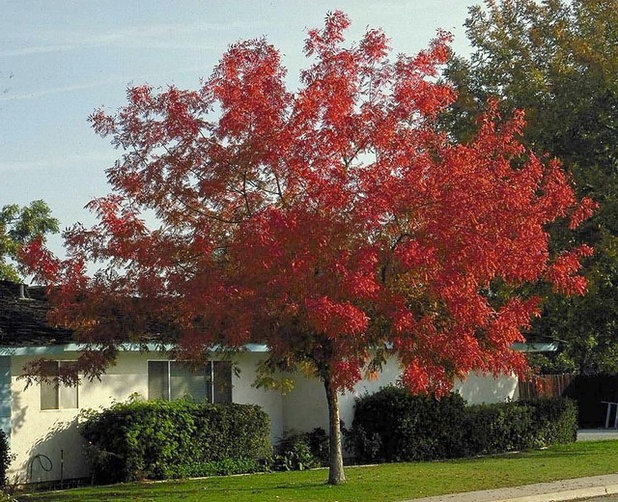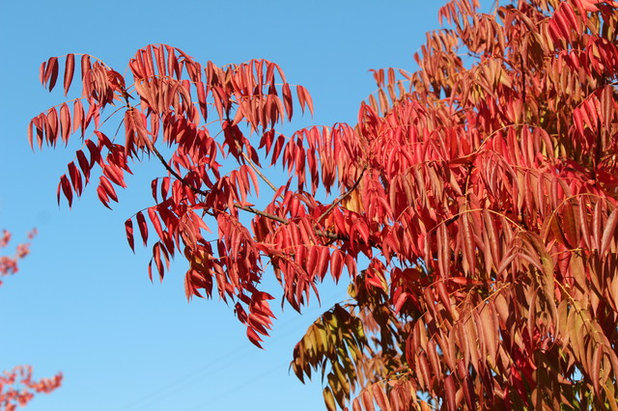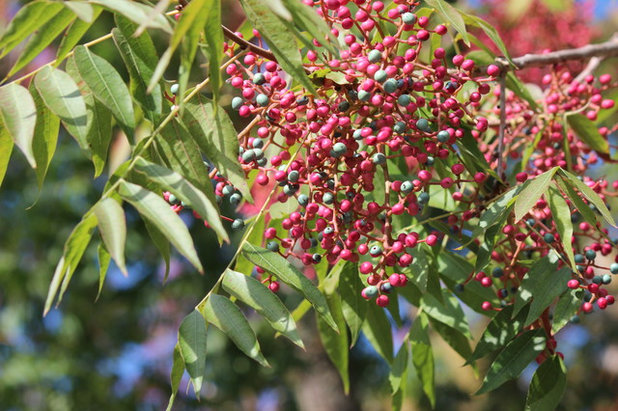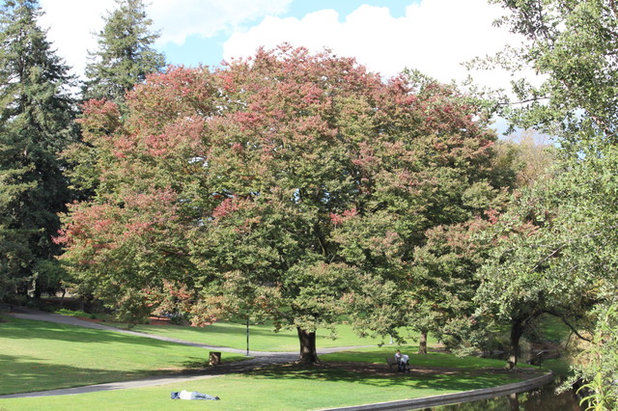This is a very reliable tree with one true gift — sort of a Susan Boyle of the arboreal world. That gift is brilliant fall color: orange, red, sometimes yellow. For most of the year, Chinese pistache is so understated and well behaved (no messy fruit, broken branches, leaf drop) that no one notices it. It’s a medium-size deciduous tree, generally with a roundish top — extremely versatile in home landscapes.
Keep in mind that pistache’s good behavior is not universal. While it is a street tree recommended by the city of San Jose, California, it is considered an undesirable invasive plant in parts of Texas and elsewhere. Check locally before planting.

Monrovia
Botanical name: Pistacia chinensis
Common name: Chinese pistache
USDA zones: 6 to 9 (find your zone)
Light requirement: Full sun
Water requirement: Moderate, but this tree is flexible enough to accept light to heavy watering
Mature size: 30 to 60 feet tall and 30 to 40 feet wide
Tolerances: No major problems; resists oak root fungus
 Distinguishing traits.
Distinguishing traits. Pistache is unmistakable in fall, when its leaves turn a brilliant orange or red, sometimes yellow. It's often the most vivid autumn show in much of California, and this tree does well in other mild climates — even in the Southwest desert.

Red berries on female trees add to the fall color display; they turn blue in winter. They're not edible, unlike the nuts of the related pistachio tree.
 How to use it.
How to use it. You can grow pistache
in a variety of situations: on a lawn, as a small patio tree, as a street tree in a parking strip, in a grove of three or more. A mature tree can serve as a substantial shade tree, as shown here in Davis, California, where good soil along with abundant water and heat encourages robust tree growth.
Growing tips. Pistache is not fussy about soil or water, but fall color usually is more pronounced in drier conditions. It's a bit slow to get going; start with a larger nursery tree if you’re in a hurry. Prune it during winter to shape it and control the size.





